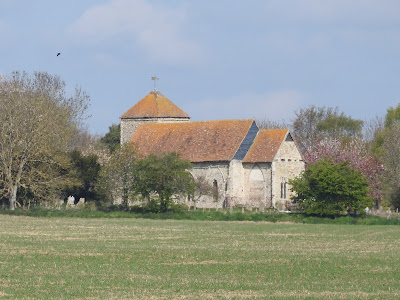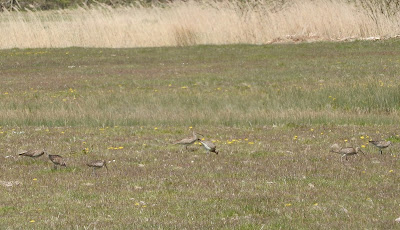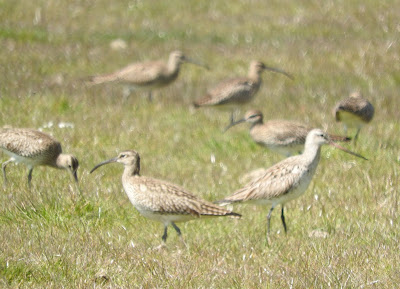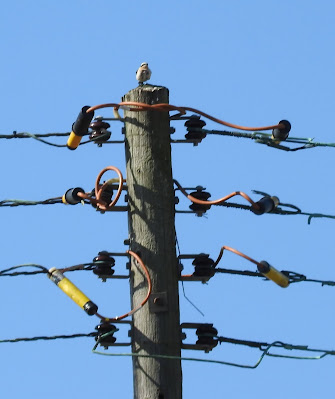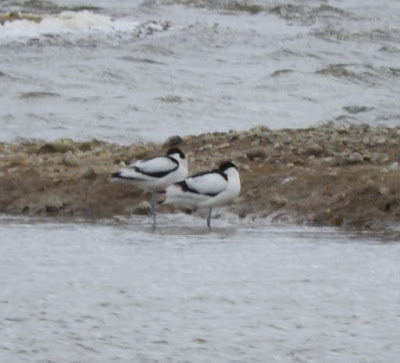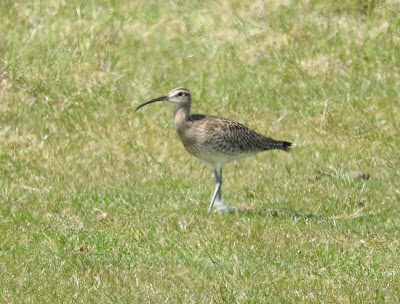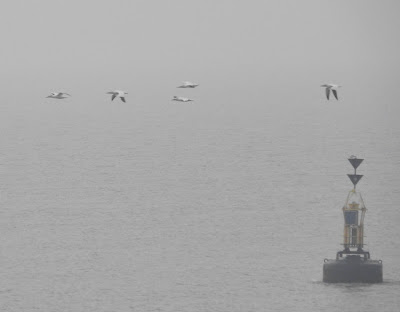Dungeness - 0545 - 0800hrs - cold, cloudy, N 2 - An early morning seawatch in the company of MC and SO was very slow for the time of year with only singles of Arctic Skua, Bonxie and Red-throated Diver of any note, plus 30 Common Scoters, 50 Gannets, 10 Common Terns, four Brent Geese, a Sanderling, a Fulmar, five Kittiwakes, a small party of five Barwits and Whimbrels, several inbound Swallows and a Peregrine. At least ten Porpoises and a Grey Seal fished offshore and the Iceland Gull remained at the Patch. The highlight this afternoon was a flock of 18 Velvet Scoters along with a steady passage of Commic Terns, Common Scoters, Red-throated Divers, several Bonxies and a Pomarine Skua.
Border Force on patrolRoyal Military Canal - 1000hrs - For a change of scene this morning (together with the dogs) we walked either side of the canal between the two bridges of Kenardington and Warehorne in glorious spring sunshine and a cool breeze. This section of the cut is as pretty as a picture and usually delivers a wide range of wayside birds, as it did today, with the added bonus that we had the place to ourselves. Firstly the migrants, and a Cuckoo calling frantically was a good start, followed by a couple of Garden Warblers babbling away from hawthorn cover and a brief burst of Nightingale song from a blackthorn thicket near the railway line. Other migrants along the way included Swallows, Yellow Wagtail, Chiffchaffs, Reed and Sedge Warblers, Blackcaps, Lesser and Common Whitethroats, plus Green Woodpecker, Skylark, Song Thrush, Long-tailed Tit, Jay, Linnet, Goldfinch, Bullfinch, Yellowhammer and Reed Bunting. As the sun warmed the earth several Buzzards, Kestrels and a Sparrowhawk took to the skies over the Low Weald. Other critters of note: Orange Tip and Speckled Wood butterflies, Hairy Hawker dragonfly and a Brown Hare.
Royal Military Canal from Kenardington bridge


